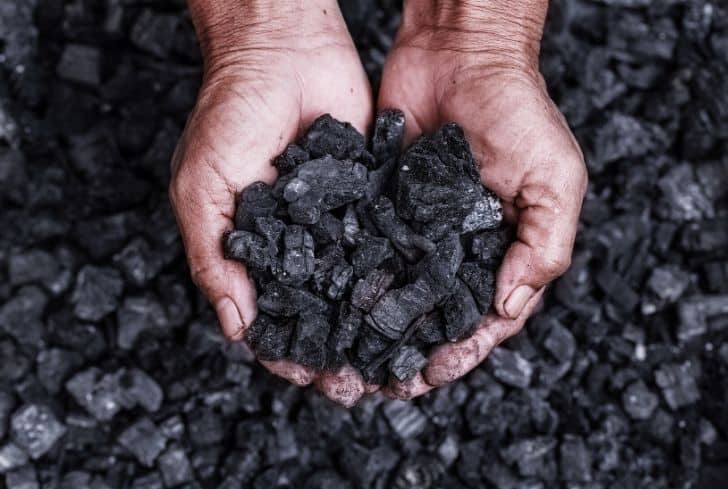Kinetic Energy: Types and Examples of Kinetic Energy

We know that the earth revolves around the sun, birds fly in the sky, trains run on tracks, cars move on the road, but all these happen because of kinetic energy. Let’s make this clearer.
There are two primary forms of energy. One is potential (stored) energy, and the other is kinetic energy. In physics, an object’s kinetic energy is the energy it possesses due to its motion. It gains kinetic energy only when it moves. So if an object is not moving, its kinetic energy is said to be zero.
Alternatively, kinetic energy can also be defined as the amount of energy an object gains by transforming from the state of rest to motion. Unless the speed of the object changes, it maintains the same amount of kinetic energy. When the object’s speed changes from the state of motion to rest, the object loses the same amount of kinetic energy that it gained.
If there would be no existence of kinetic energy, everything will be motionless around us. Objects would be unable to move. The whole universe would be a cold place because kinetic energy generates heat as one of its forms.
The kinetic energy of an object mathematically can be written as:
Kinetic Energy = 1/2 m v2
Where,
m = mass of an object
v = velocity of an object
Kinetic energy is a scalar quantity, i.e., it has only magnitude but no direction. The standard unit of kinetic energy is joule (J), and the imperial unit of kinetic energy is the foot-pound(ft-lb).
The kinetic energy of an object is dependent on the Mass and Velocity of the object. The Mass is the amount of matter contained within an object while Velocity is the speed of an object moving in a particular direction. When Velocity is given, the kinetic energy of an object is directly proportional to its Mass. In the same way, with the given Mass, the kinetic energy of an object is directly proportional to its Velocity.
The kinetic energy is double the Velocity. The Velocity can have either positive or negative value, but Velocity squared is always positive. So, kinetic energy must be either zero or a positive value.
Interestingly, the kinetic energy can also be passed from one object to another. For instance, in the billiards game, the player supplies kinetic energy to the cue ball when he strikes the cue ball with the cue stick. The cue ball maintains this kinetic energy as long as it has maintained its speed.
In case of a collision with another cue ball, it supplies kinetic energy to that ball and loses its kinetic energy. Thus, the ball with which it collided gained kinetic energy and started moving due to it.
Types and Examples of Kinetic Energy
Kinetic energy is of five types:
Radiant Energy
Radiant energy is electromagnetic energy. It can travel through space or medium. Kinetic energy is the energy of motion. As the radiant energy always remains in motion traveling through space or medium, it is also a kind of kinetic energy. Radiant energy travels in a straight line at very high speed (299 792 458 m/s), and this may be visible or invisible to the human eye.
The examples are:
- X-rays
- Ultraviolet light
- Visible light
- Radio waves
- Gamma rays
- Infra-red radiation
- Microwaves
- Black lights
- Headlights on an automobile.
- Sunshine or solar energy.
- Solar cells help to convert the radiant energy from the sun into electrical energy.
- An electric toaster that transfers heat from the heating element to the bread.
- The heat released from an incandescent light bulb.
- Radiant heating systems.
- Some materials absorb radiant energy and re-emit the radiant energy, and this is called fluorescence.
- Radio signals which transfer information are the radiant energy.
Thermal Energy
Thermal energy generates due to the quick motion of atoms and molecules, especially when they collide with each other. It is also called heat energy. The matters in the universe consist of atoms or molecules which are always in motion. However, we can’t see the movement of this energy with our naked eyes. We can feel it at the time it touches our skin.
Examples of thermal energy:
- A cup of hot tea
- Hot springs
- Thermal energy keeps the blood warm.
- The volcanic action of the earth and the decay of natural minerals releases Geothermal energy.
- Heat harnessed from the oceans gets heated by solar energy.
- The sun heats up the atmosphere leading to the rise of temperature in the day time.
- Baking in an oven increases the thermal temperature of the substance.
- Feeling the warmth of a campfire on the face.
- A heated swimming pool.
- Geysers work on geothermal energy.
Sound Energy
The vibration of an object causes sound energy. Sound is the movement of energy generated by vibrations through some substance, such as air or water or solid. Sound energy can travel through any medium to transfer energy from one particle to another, and you can hear it.
However, it cannot travel through a vacuum as a vacuum does not contain any particles that can act as a medium. When an object vibrates, it makes the surrounding particles vibrate by transferring its energy. These particles, when colliding with other particles, make them vibrate. In this way, the sound energy gets transferred from one particle to another.
Examples of sound energy:
- Individual’s voice
- Singing
- Clapping
- Stomping your feet.
- Beating drums
- A buzzing bee
- Any musical instrument.
- A whistling teapot
- Croaking frogs
- A tuning fork
- A sonic boom
- Referee’s whistle at a game.
- A gong that has been struck.
- Snapping your fingers
Electrical Energy
Every object in the universe is made up of small particles called atoms. Atoms consist of tiny particles, namely electrons, protons, and neutrons. The electrons in the atom always move around the nucleus of an atom. While applying voltage, the electrons present in the atom get energy and break the bonding with the parent atom and thus become free.
The energy of this free electron is called electrical energy or electricity. Therefore, it is the energy of these moving free electrons. Electrons are negatively and positively charged and usually move through a wire.
Examples of electrical energy:
- Lightning
- Electrical charges moving through a cable or electricity.
- Doorbells
- Static electricity
- Audio speakers
- Batteries in use
- Electricity stored in capacitors.
- The brain produces an electrical current as direct current (DC).
- Alternating current (AC) in homes supplying electrical energy to household appliances.
- Headphones
- Electric eels generate electrical energy.
- A hydroelectric dam transforms the kinetic energy from falling water into electrical energy.
Mechanical Energy
It is the stored energy in objects. When an object moves quicker, more energy is stored, which is known as potential energy. The sum of the kinetic energy and the potential energy is called mechanical energy. This energy, however, cannot be created or destroyed, but, can be converted into another form of energy.
Examples of mechanical energy:
- Wind
- A flowing river
- An airplane in flight
- Spinning flywheels
- A bullet fired from a gun.
- Someone running
- Someone skydiving
- Planets moving around the sun.
- Satellites that orbit the earth.
- Roller skate wheels while skating.
- Someone jump-roping
- Your jaw when you are chewing.
- A fish swimming
- A moving car
- Electrons spinning around the atom’s nucleus.
- Fingers striking the keys while playing the piano.
- The piano keys that are hit, in turn, hit the strings.
- A child jumping on a trampoline.
- Sliding on playground equipment.
- A running roller coaster.
- Kicking the soccer ball.
- A soccer ball moving.
- Fruit falling from the tree.
- A Frisbee being tossed into the air.
- When a person shoots pool, the transferring of energy to a ball from the stick.
- Snow skiing down the mountain.
- Gas molecules moving around in a room.
Sources:






